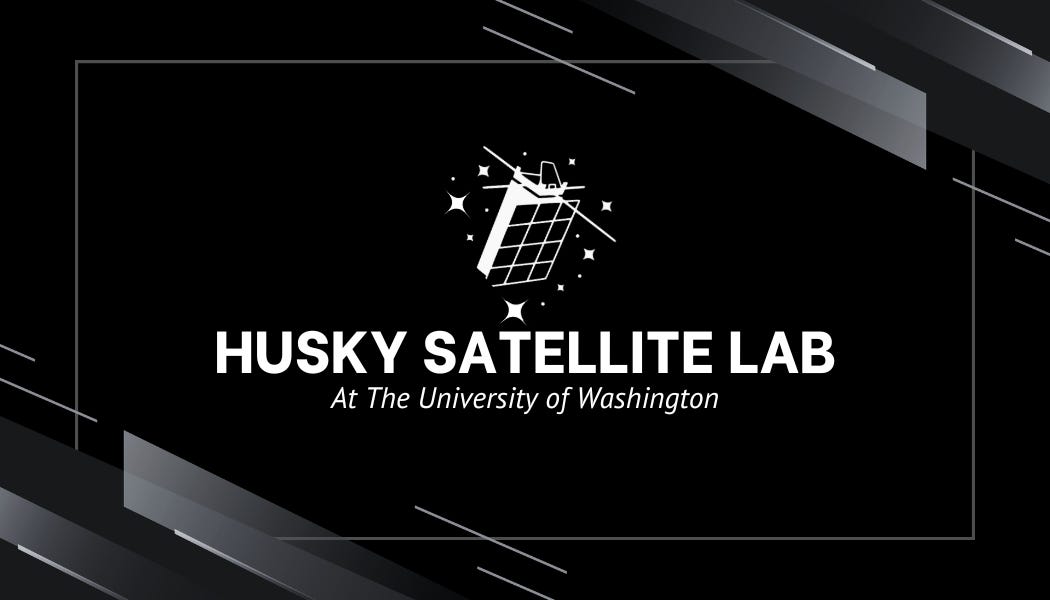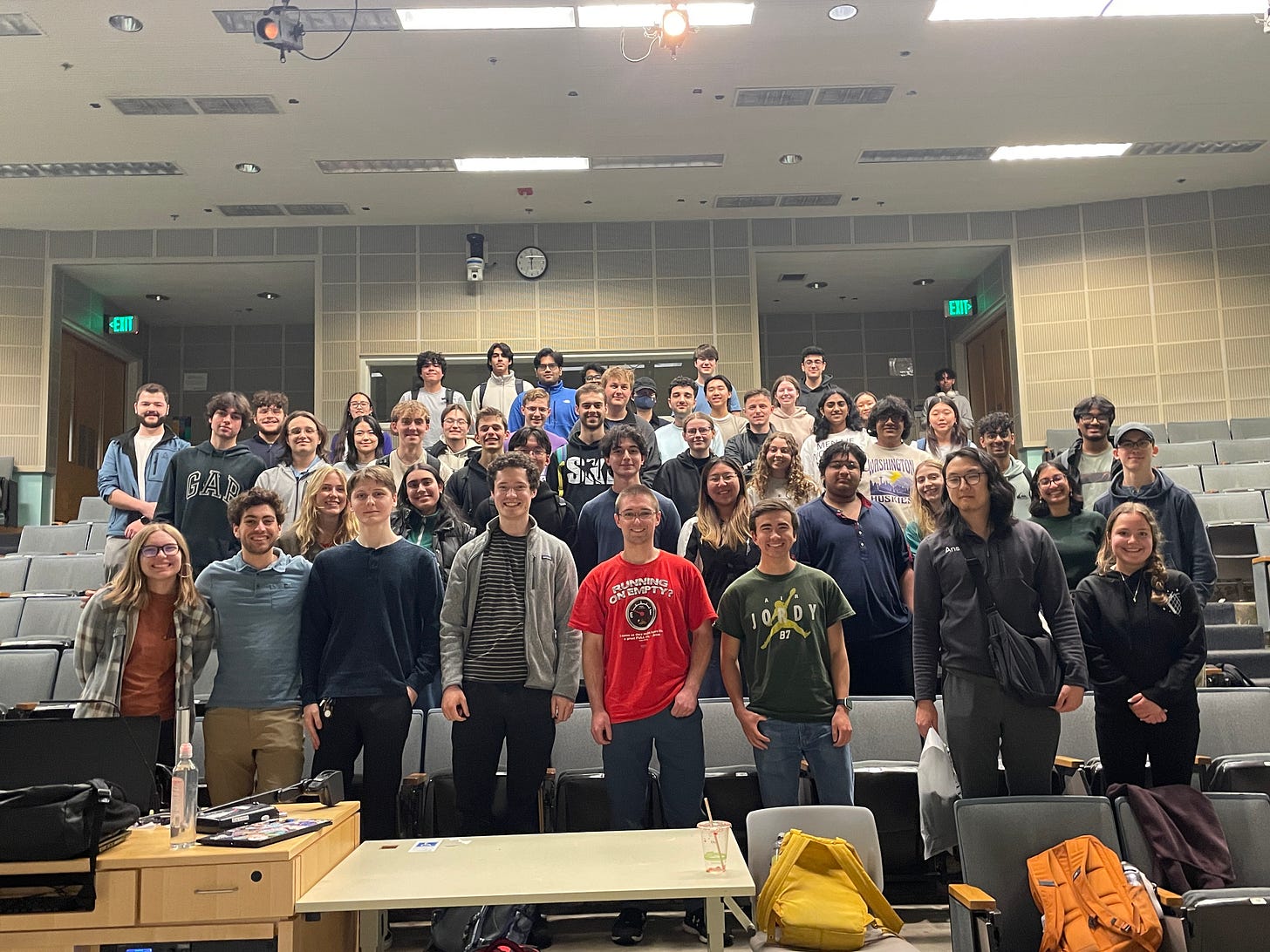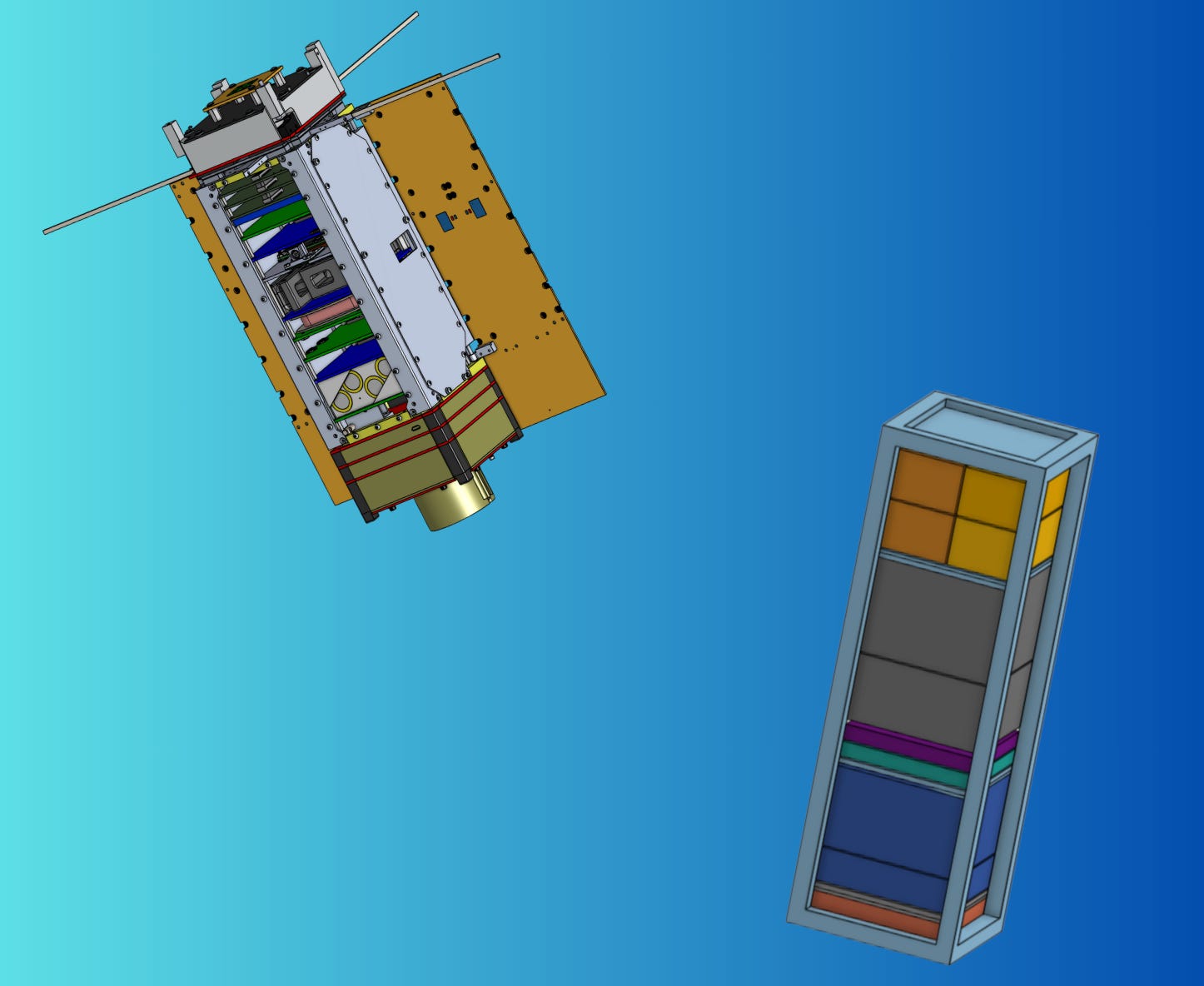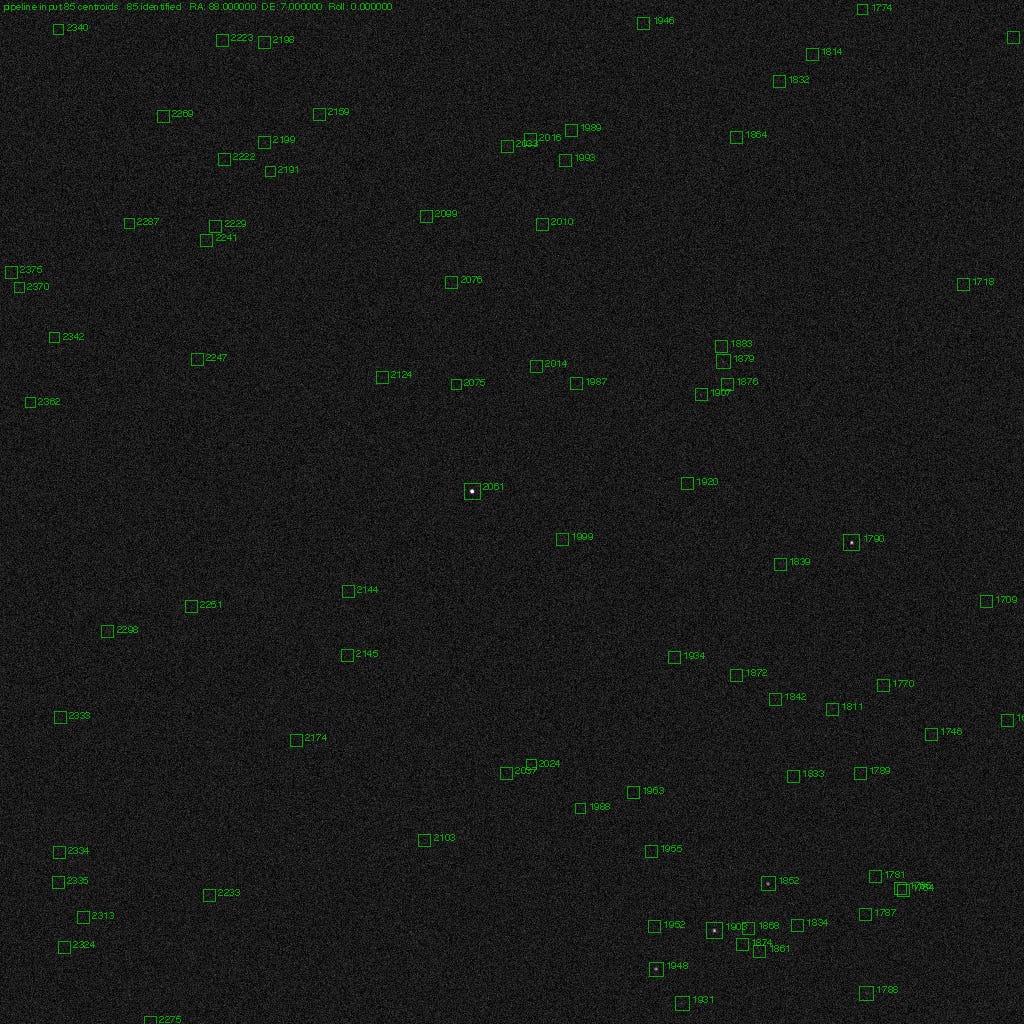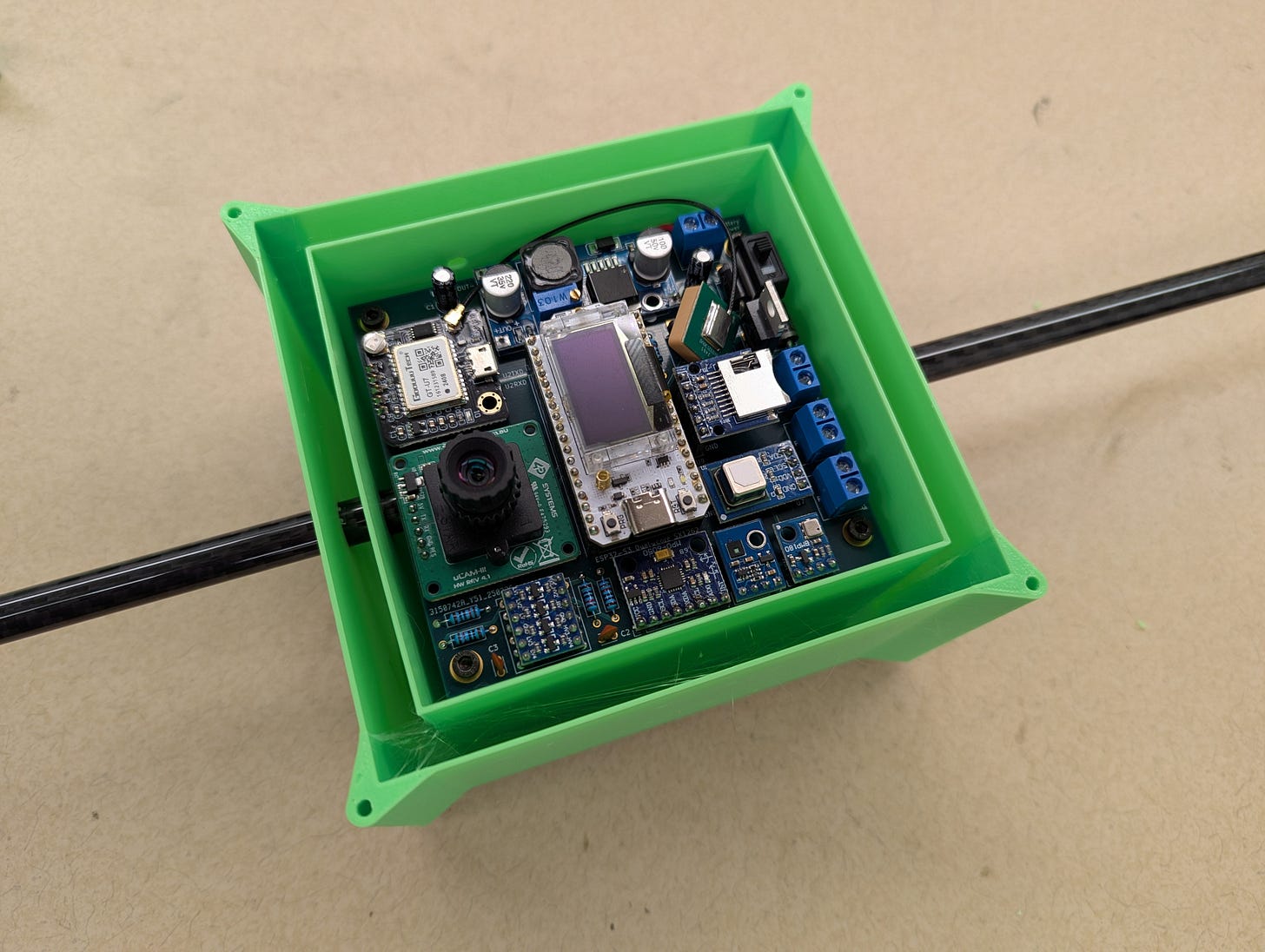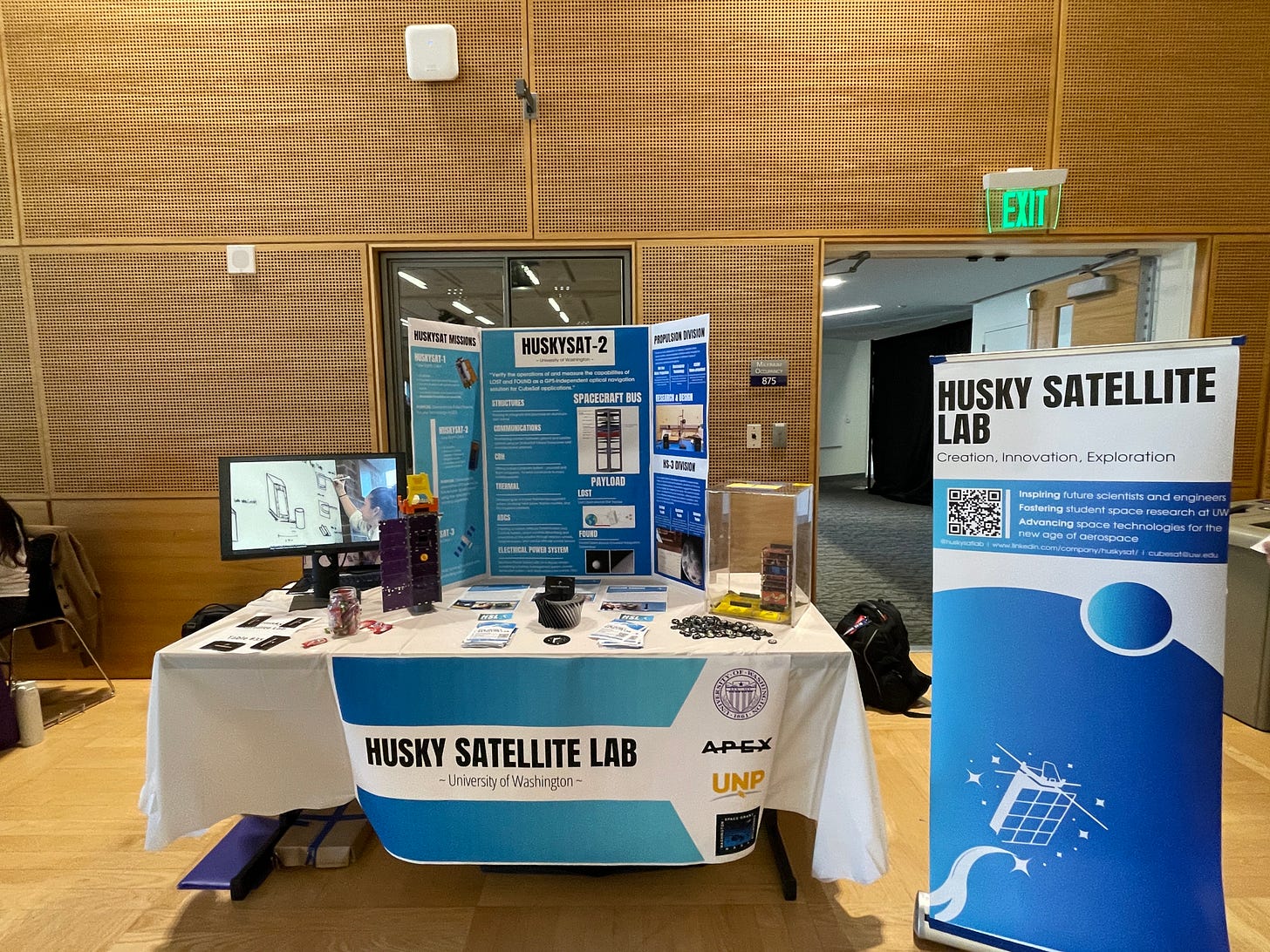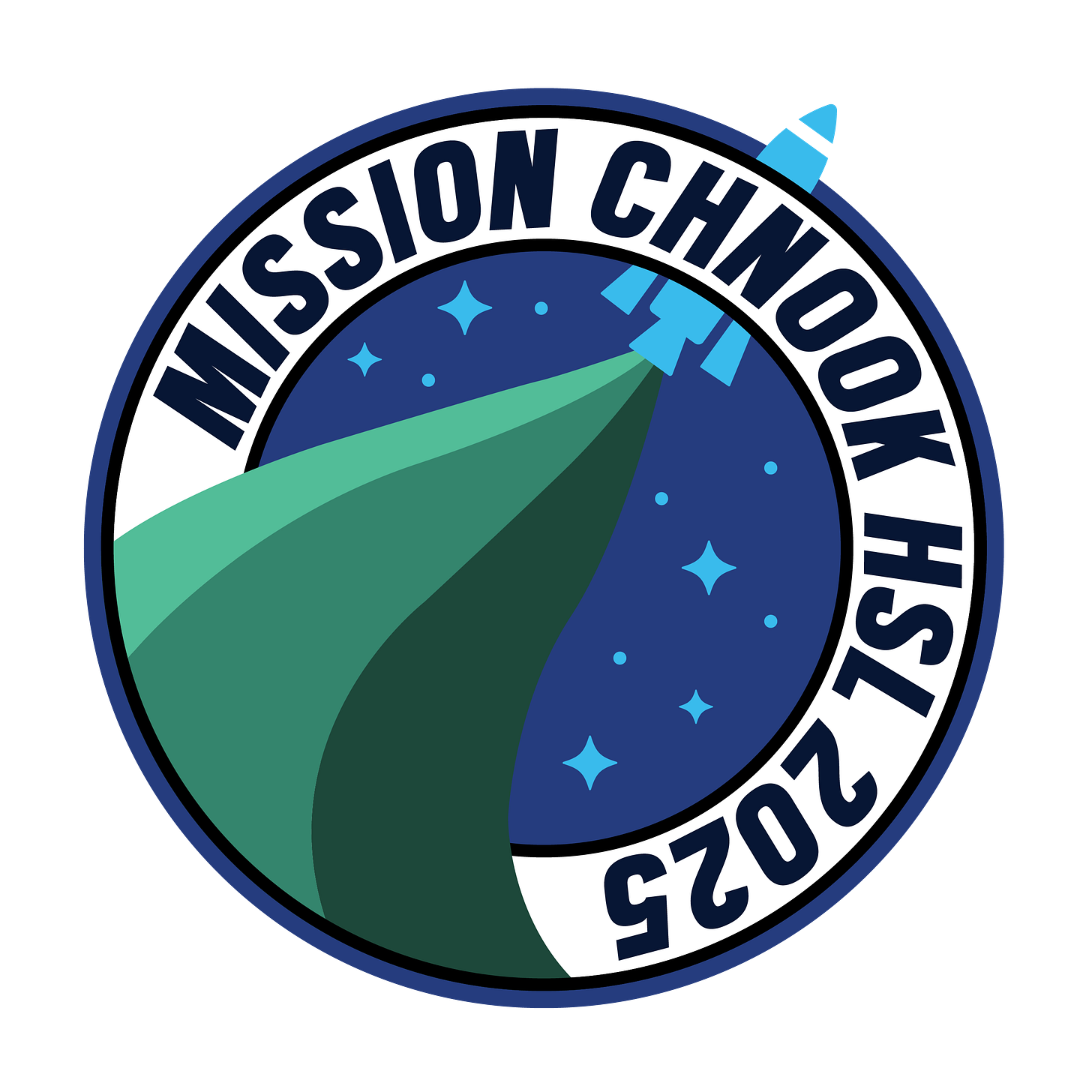HSL Newsletter: Autumn 2025
Where we've been, where we are, and where we're going at the Husky Satellite Lab at The University of Washington
Greetings Husky Satellite Community!
It’s been a bit since our last post and a lot has happened over the past few months at HSL. From the development of HSL Divisions to new missions and connections, we’ve been amping up our satellite connections here at UW and across the nation! With that in mind, on this quarters newsletter, let’s catch you up on our activity over the past year including what’s in store for the 2025-2026 year at HSL.
So hold onto your solar panels and get ready your thrusters; let’s get started!
Four Divisions but One Lab
Last year, our team grew into 4 very distinct groups of projects/missions. As such, the admin team agreed that the formation of separate divisions within HSL was justified to provide more internal structure, direction, and excitement within the lab. The divisions are separated as followed:
HS-2 Division
HS-3 Division
Propulsion R&D Division
Business Division
Special Note But ALL DIVISIONS are currently onboarding new members during the Autumn Quarter Recruiting Cycle. If you are/know an undergraduate or graduate student at UW and want to push the boundaries of aerospace, spread the word and click on the link below to apply!!
Of course there are some missions (like CHNOOK which we’ll get to in a bit) that extend beyond the scope of these divisions, but generally each division has a specific mission or focus area of expertise. With that in mind, let’s do some deeper dives and updates on each division, shall we?
HS-2 Division: Flagship CubeSat Mission of HSL
The Mission of HS-2
As one of our largest missions with over 70+ members, HS-2 has been a major focus mission for the lab over the past few years. In Fall Quarter of 2024, we, along with other universities teams from across the US, received roughly 300,000 dollars from the University Nanosatellite Program (UNP) to build the first stages of our novel satellite. With this financial and mentorship backing, we’ve been off to the races since.
As a refresher on HS-2, it’s mission is to deploy a 3U CubeSat to a 400-600km orbit above the Earth in what is called Low Earth Orbit (LEO). The payload of this satellite is a completely novel GPS-Independent tracking system called LOST and FOUND created in house at HSL. LOST is a type of star tracker which uses the images of the stars to gain a trajectory and location, while FOUND maps the curvature of the Earth to determine an altitude and coordinate. Together, they are a powerhouse of a system that we hope to test and rate the performance of using images captured from both systems and downlinked to our ground station here at The University of Washington (fancy right?).
There are 9 different subsystems in total that cover the development of HS-2, each critical for mission execution and success:
Structures
Thermals
ADCS (Attitude Determination and Control System)
EPS (Electrical Power System)
Horizon Tracker (FOUND team)
Star Tracker (LOST team)
Payload
CDH (Command and Data Handling)
CGS (Communications and Ground Software)
What Has HS-2 Been Up To?
This is a huge mission, one our team has been hard at work developing these past few years. So far, we’ve gone through 3 different reviews with UNP: SCR (System Concept Review), SSR (System Requirement Review), PMR (Program Management Review), with PDR (Program Deliverable Review) presentations right around the corner in later autumn.
The summer was a busy time for this division as HSL had a paid opportunity for some HS-2 Division members to complete a tremendous amount of work on the satellite. In addition to furthering CAD designs, simulations, and solidifying hundreds of requirements in the RVM (Reference Verification Documents), a small team went to Salt Lake City Utah for one of the largest small sat conferences in the country: Small Sat.
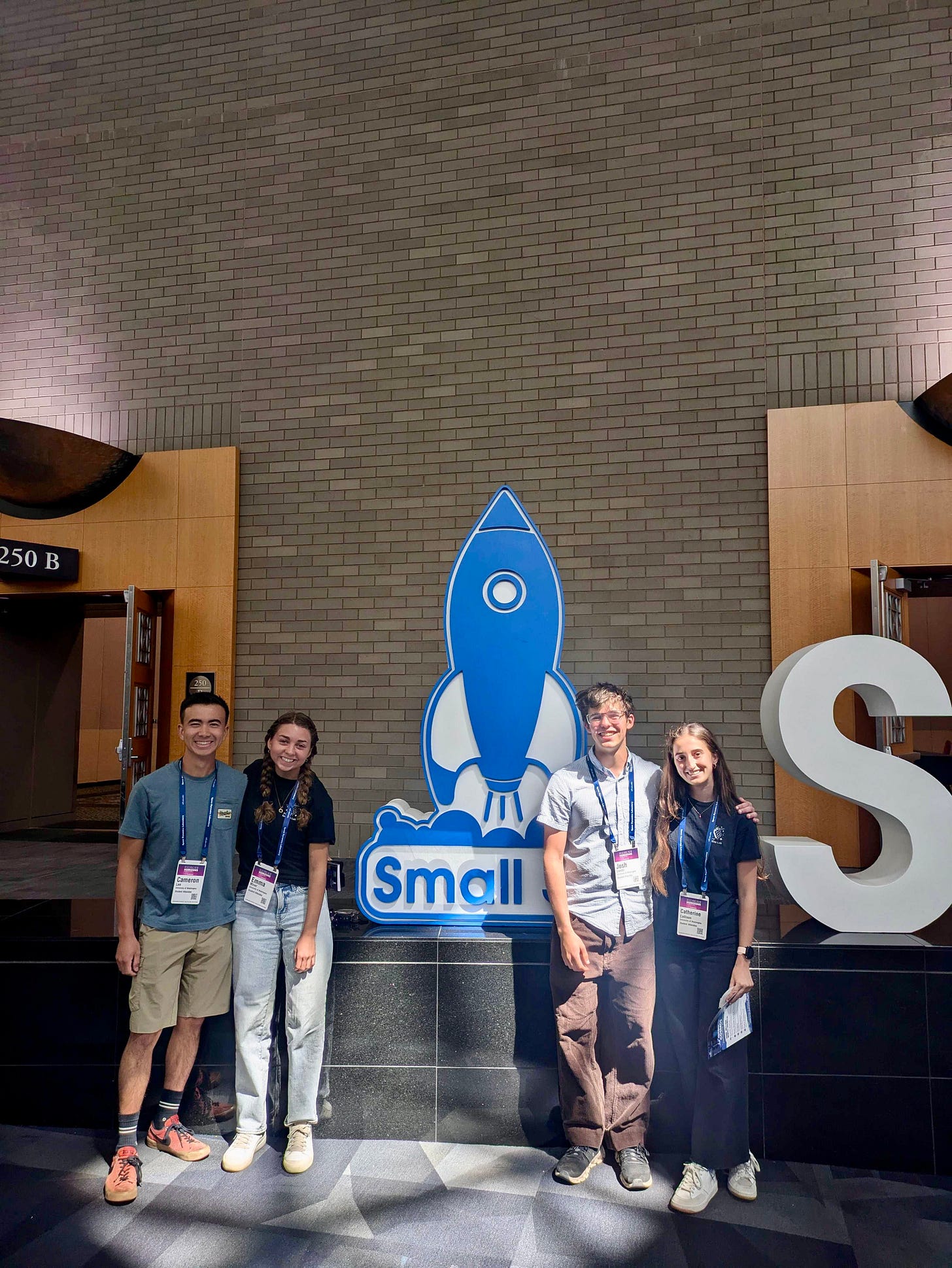
The team, consisting of Catherine Collision (Chief Engineer of HS-2), Cameron Lee (Program Manager of HS-2), Josh Lando (FOUND and Payload Lead of HS-2) Emma Miner (System’s Engineer for HS-2), not only did some awesome networking and tabling at the event but also gave the Program Management Review (PMR) presentation to a board of high ranking UNP personal.
Now, as of September 29th, the team has submitted their PDR documentation which took the sweat and grease from the whole summer team. Good work crew!
Where Are They Heading This Quarter?
With PDR deliverables out of the way, the entire division will be focusing on PDR presentations happening in our labs facilities at the end of Autumn Quarter (just a few months away!). Along with continuing CAD work for structures, Ansys simulation testing for thermals, and program debugging for LOST and FOUND, the division will be prepping for the next structural milestone, the HS-2 FlatSat, within the next year.
HS-2 Division Mission: PHAT-3 High Altitude Balloon Launch
HS-2 has a major focus on the satellite, but to really test the infrastructure and some of the key components of said CubeSat, active testing is a MUST. That is why we are very excited to be launching our next high altitude balloon, PHAT-3.
Giving the HS-2 members active work on PCB designs, this mission is the latest in HSL's series of high altitude weather balloons. This helium balloon will lift our CubeSat-style payload to an altitude of 27,000 meters (90,000 ft) where the thin atmosphere can reach temperatures as cold as -50°C. At peak altitude, the balloon will burst, deploying a parachute that will safely return the payload to Earth.
The payload carries radios and cameras to test our communication systems and capture Earth images that will provide test data for our in-house developed Earth tracker software. To protect these sensitive electronics from the extreme environment, we've designed an adaptive, resistive thermal management system to maintain optimal temperatures for the onboard battery, radios, and camera.
PHAT-3 is set to launch in the Moses Lake area of Washington State within by the end of Autumn Quarter so keep an eye on our socials for more updates!
Propulsion R&D: The Rocket Engineers of HSL
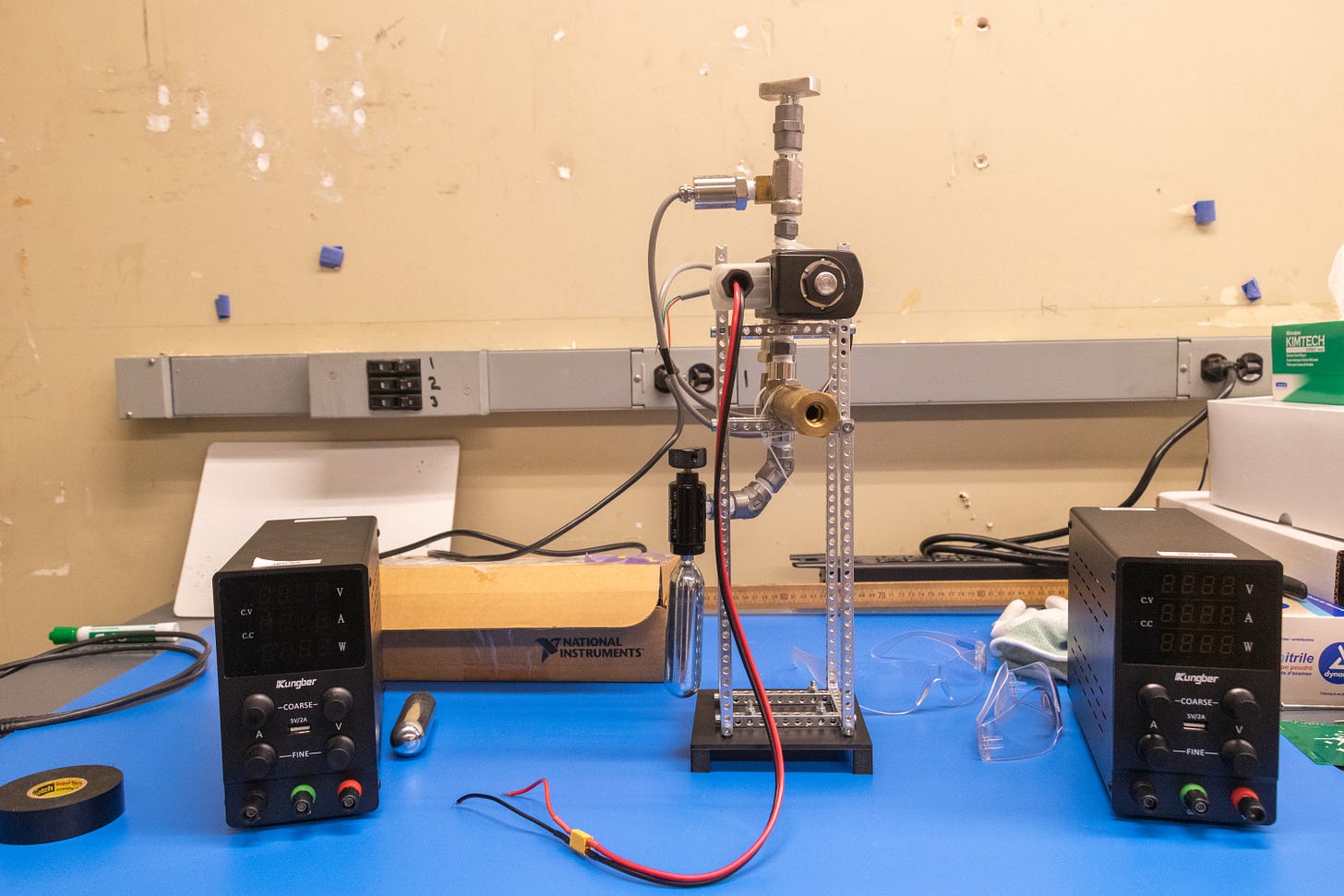
The Mission of Prop R&D:
You can’t really talk about getting to space without mentioning propulsion, and our HSL Propulsion R&D Division is here to shake up the industry! In the Propulsion R&D Division at HSL, our 20+ team focuses on innovating a new era of propulsion solutions for small satellites. The Division dives deep into research and testing, working on various propulsion technologies including:
Mono-propellent: Generates thrust via one combustion fuel source
Water Resistojet: Generates thrust through non-combustion fuel source of water
Solar Sails: Generates thrust from photons in space particularly from our solar systems sun
Electrospray: Generates thrust from an electrical thruster
What Are They Up To Now:
Along with working on trade studies and CAD models of the propulsions systems listed above, the team is prepping for the release of research papers within the next year on some of their novel designs. Along with research papers, the division is looking to add new members this Autumn, train new recruits on propulsion design, work within the design shop on new models, and obtain more industry backing for ongoing research.
HS-3 Division: The Penultimate Satellite of HSL
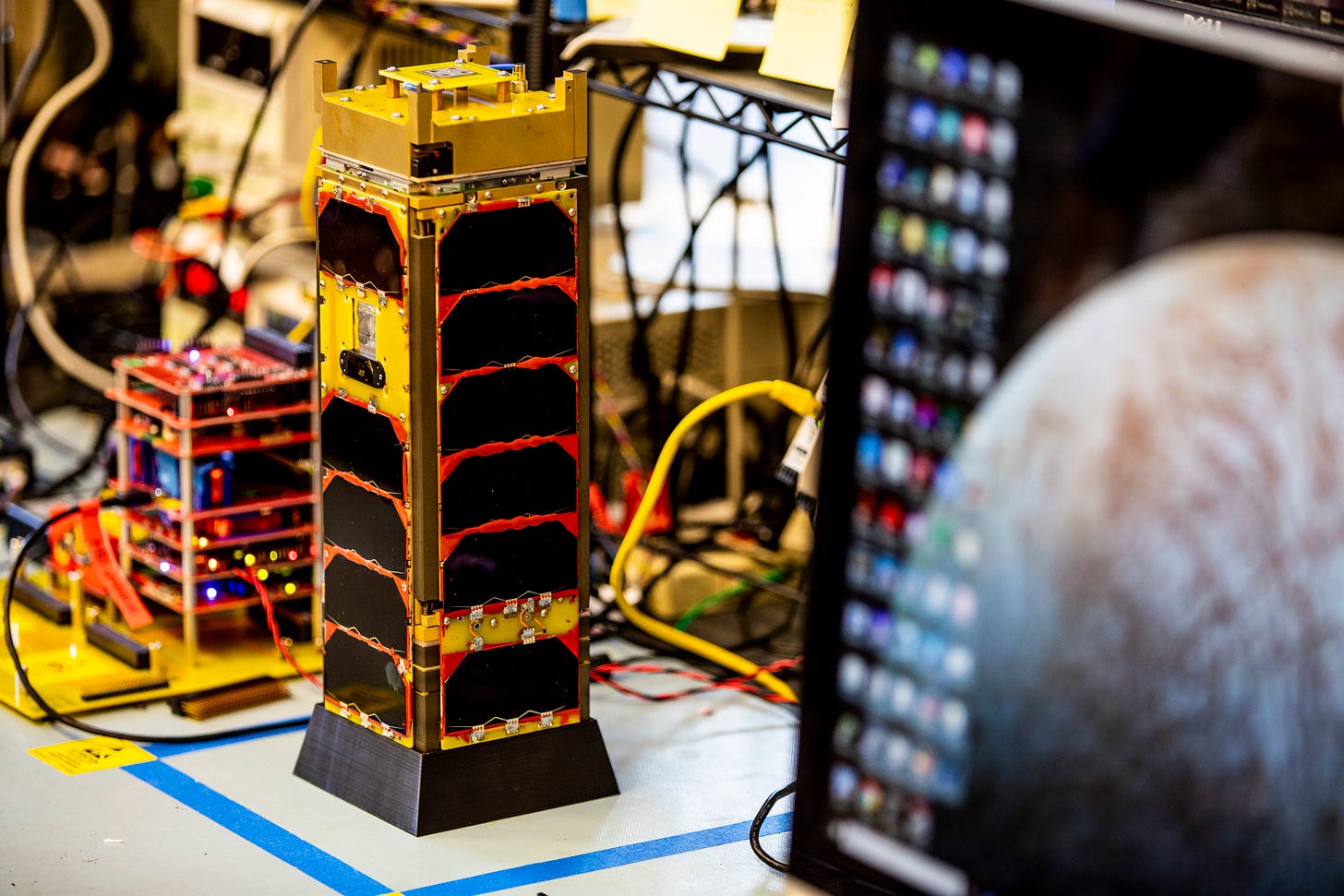
The Mission of HS-3:
Ever since the creation of the lab, HSL has had it’s sights trailed on the moon. Now, with more resources and knowledge than every, HSL has begun to take steps towards that goal by developing the first stages of the lunar orbiting CubeSat, HS-3.
HS-3 will be a moon orbiting CubeSat set to launch in the mid 2030’s. The mission? Map the winding tunnels and tubes under the surface of Mare Imbrium and Oceanus Procellarum, an area of the moon which shows high probability of lunar lava tubes having generated from past lunar volcanic activity. By mapping the tubes using ground penetrating radar systems, HS-3 aims to locate areas of interest for human habitation, offering protection from extreme temperature fluctuations, radiation, and meteorite impacts for the next generation of human moon missions.
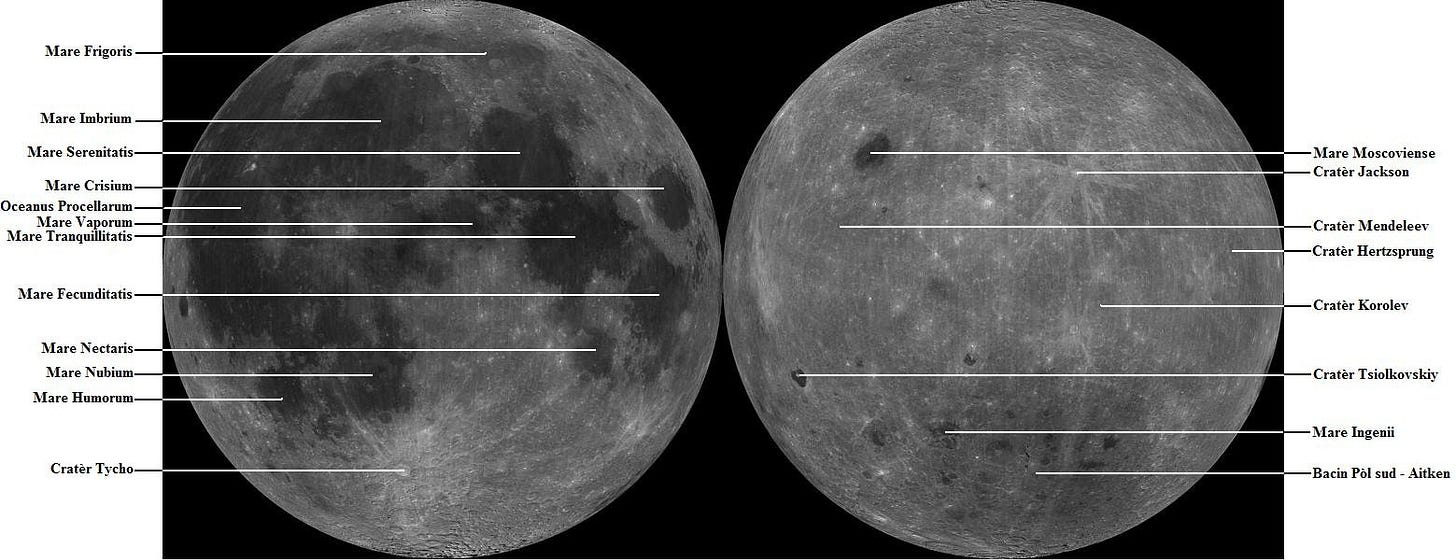
HS-3 plans to use everything we’ve been developing in the lab for this mission, including LOST and FOUND for gps-independent navigation and propulsion systems developed by Propulsion R&N.
What Are They Up To Now:
The division, in it’s fledgling stages, is currently designing the mission overview and objectives, searching for launch providers and funding, and creating orbital schematics for a launch from Gateway (NASA’s lunar orbiting space station set to be developed in the 2030s) or LEO.
Business Division: Keeping The Lights On At HSL
The Mission of Business:
With HSL’s activities ramping up during the last year of development and growth, the lab decided to create a new subsystem to handle financial concerns, PR developments, and (shocker of shockers) everything else that supports thousand-dollar missions and projects. So, as of 2024, HSL welcomed the division you see today, the Business Operations Division, to the lab.
The Division is split into 5 difference components:
Financial Management
Branding and Merchandise
Social Media and Marketing
Outreach and Event Planning
Fundraising and Sponsorship Development.
Each division above plays a critical role in the health and wellness of the lab, both in terms of financial stability, community engagement, industry communication, and overall lab moral.
What Have They Been Up To?
Over the past year business has done a lot of different projects to help the lab thrive. This includes creating a promotional video of the lab in winter and spring quarter of 2024, hosting fundraisers at locations such as MOD Pizza, and organizing new outreach materials for conferences and events.
Speaking of conferences and events, they also organized HSl’s involvement in numerous outreach initiatives from Engineering Launch in Autumn Quarter to specialty engineering workshops for the broader UW community. The division also launched their first round of HSL merchandise including stickers, T-Shirts, and Sweatshirts to members of the lab.
The Division has also completely revamped the HSL website, which you can check out below!
Where Are They Heading This Quarter?
This quarter the business division has some big goals, including organizing lab workshops for all members of HSL across all divisions to learn essential skills such as CAD and F-Prime coding (a language directly used by NASA on many interplanetary missions such as the Mars Ingenuity Mission). Additionally, the division is lining up new merch (both for HSL members and the broader community so keep an eye out!) and working on industry visits of the lab and it’s members for recruiting season.
PS: If you represent a company hoping to grow stronger ties to HSL or are in the middle of recruiting season, reach out to cubesat@uw.edu and we can organize your companies visibility within the lab!
Specialty Mission: Mission CHNOOK
The Mission of CHNOOK:
This year, HSL had the amazing opportunity to not just build something for space, but actually launch a payload to the stars. That mission was CHNOOK, a partnership payload that HSL built and launched past the Kármán Line (100km in altitude and the official boundary between space and Earth) within Blue Origins New Shepard launch vehicle during their NS-35 Mission on September 18th, 2025 (check out a video of this launch from Blue Origin’s YouTube channel by clicking the link HERE).
Mission CHNOOK had 3 main parts to the payload:
Science → Within the bus of the payload HSL worked with a lab under lead mentor Dr. Derek Jacoby from The University of Victoria and one of his undergraduates, Piyush Acharya, on creating a container for a biology payload testing DNA origami. The hope of this payload was to examine the effects of zero-gravity on such DNA for future medicine transition in space.
HS-2 Testing → The bus of CHNOOK also contained a series of structural components to test in launch and zero gravity activity for the HS-2 mission.
Community Outreach → The final element of this payload actually was 3 different parts to engage the local and global community with HSL and space.
A small stuffed husky which was a collaboration with The University of Washington.
A list of community names, printed on a sheet of paper, submitted by the general public from across Washington State who wished to have their names in space.
An SD card carrying the art submission of K-College students in Washington State and, thanks to the collaborations with a non-profit organization the Might Crayon, across the globe so students creativity could reach for the stars.
All of these payloads (including the names and pictures) will be up on our website soon so stay tuned!
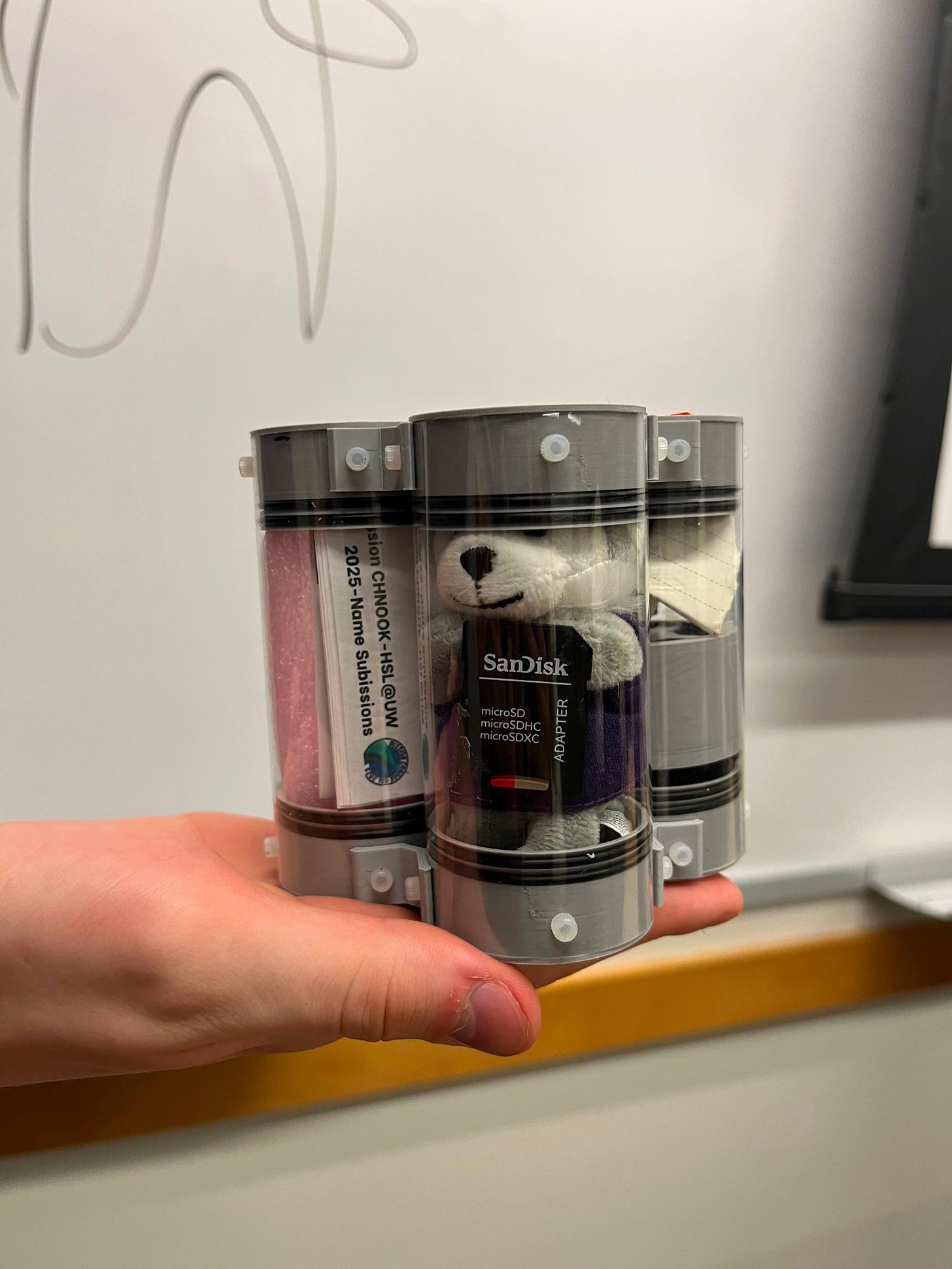
Each of these payloads where securely sent to Blue Origin, launched, and as of last week, returned safely to the lab for experimental study and presentation. This is the first time since 2019 that HSL has touched space, and it certainly won’t be the last!
What To Expect Going Forward
Well that was A LOT of cool info wasn’t it! But don’t worry, the HSL has so much more in store over the next school year and we can’t wait to continue sharing our news and updates here on the HSL Newsletter.
If you are interested in providing assistance to help us complete our missions, please fill out the interest form.
If you’re a student looking to join us on this awesome mission, please fill out our member application.
Thanks for reading Husky Satellite Lab Newsletter! Subscribe for free to receive new posts and stay updated.



